Warblers are a lifetime study. Only a few nest in the Toronto area. We see others, if we are lucky, during migration. If you were to visit the northern bush habitat of many species during the breeding season, it would still be difficult to find these tiny birds given the vast vegetation. I have heard the Ovenbird sing thousands of times but have only seen the one which struck a neighbour’s window in migration. Warbler songs are useful in identification but many sound alike until you have heard them dozens of times. Every spring, I listen repeatedly to a CD of warbler songs in order to refresh my memory.
NORTHERN PARULA WARBLER
The Parula Warbler is a bluish warbler.

It has a yellow throat and breast

and two conspicuous white wing bars.

The male has a dark band across the breast.


BLACK-THROATED GREEN WARBLER
The Black-throated Green Warbler has a bright yellow face

a black throat

and an olive-green crown.


BLACK and WHITE WARBLER
The Black and White Warbler is striped lengthwise with black and white.

It has a striped crown

and white stripes on the back.


BLACKPOLL WARBLER
The Blackpoll Warbler is striped

The male has white cheeks

and a black cap.
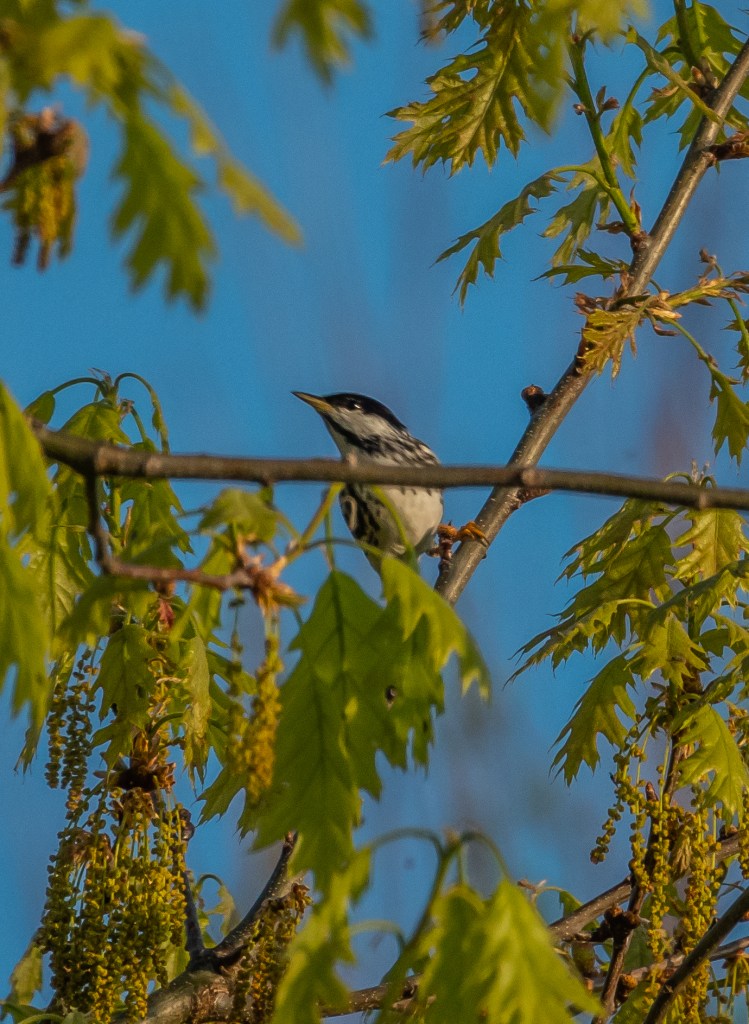
The female is less heavily streaked and is greenish-gray above and white below.

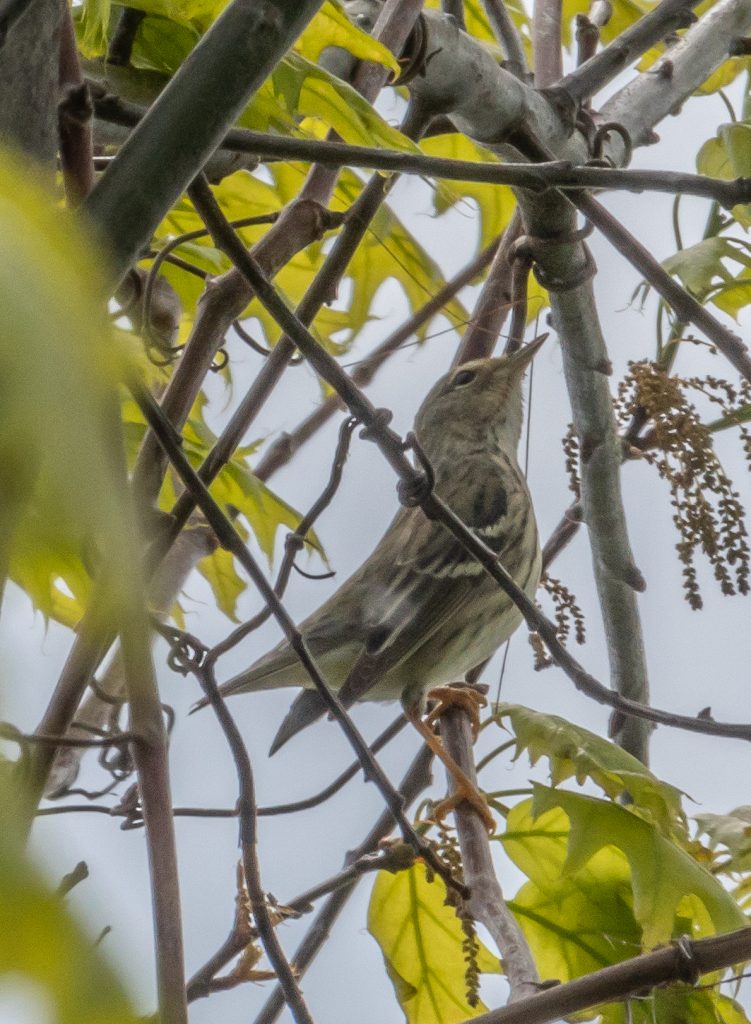
BLACK-THROATED BLUE WARBLER
The upper parts of the male are clean-cut

and blue-gray in colour.

Throat and sides are black

and the belly is white.

MAGNOLIA WARBLER
Magnolia Warblers are black and yellow.
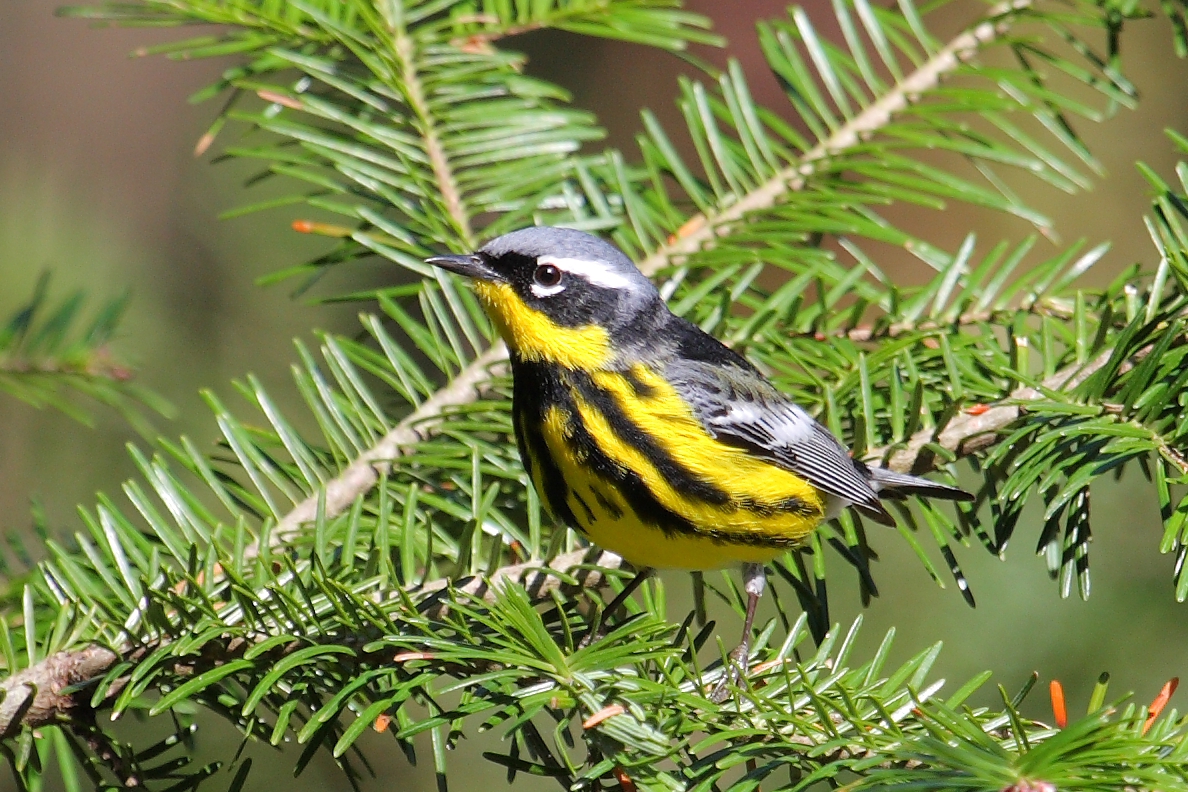
The upper parts are blackish.

There are white wing patches on the wings and tail.

Underparts are yellow with heavy black stripes.

YELLOW-RUMPED WARBLER
Yellow-rumped Warblers have a bright yellow rump.

The male in spring is dark blue-gray above.

There is a yellow patch before each wing.
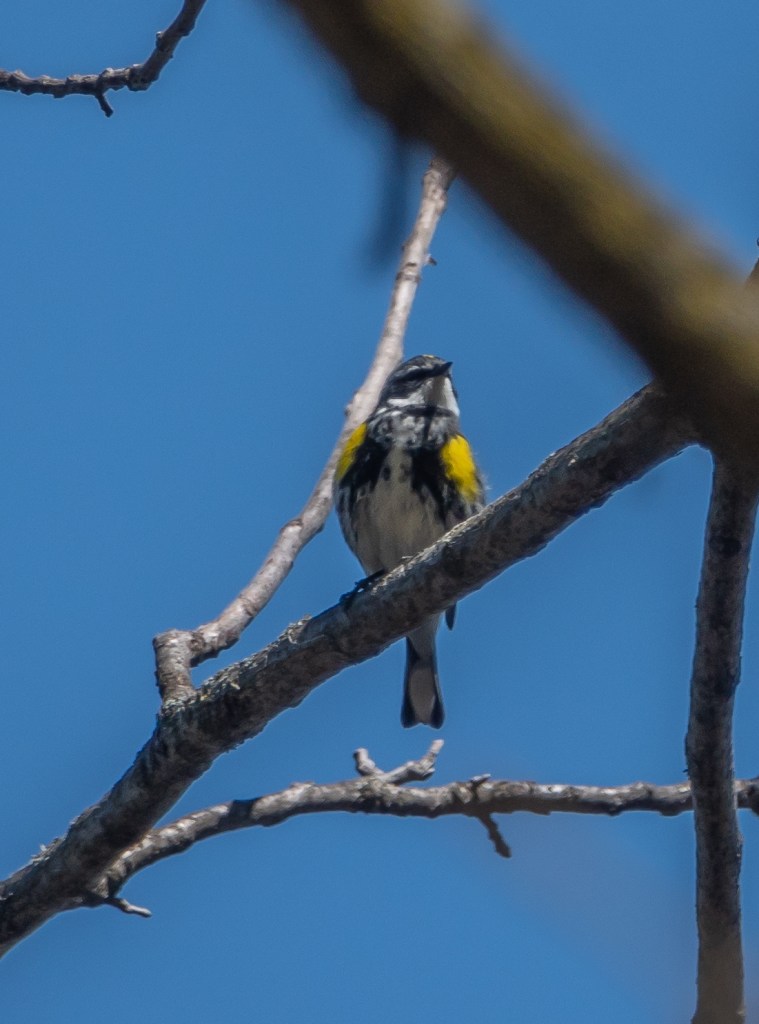

The female is brownish.
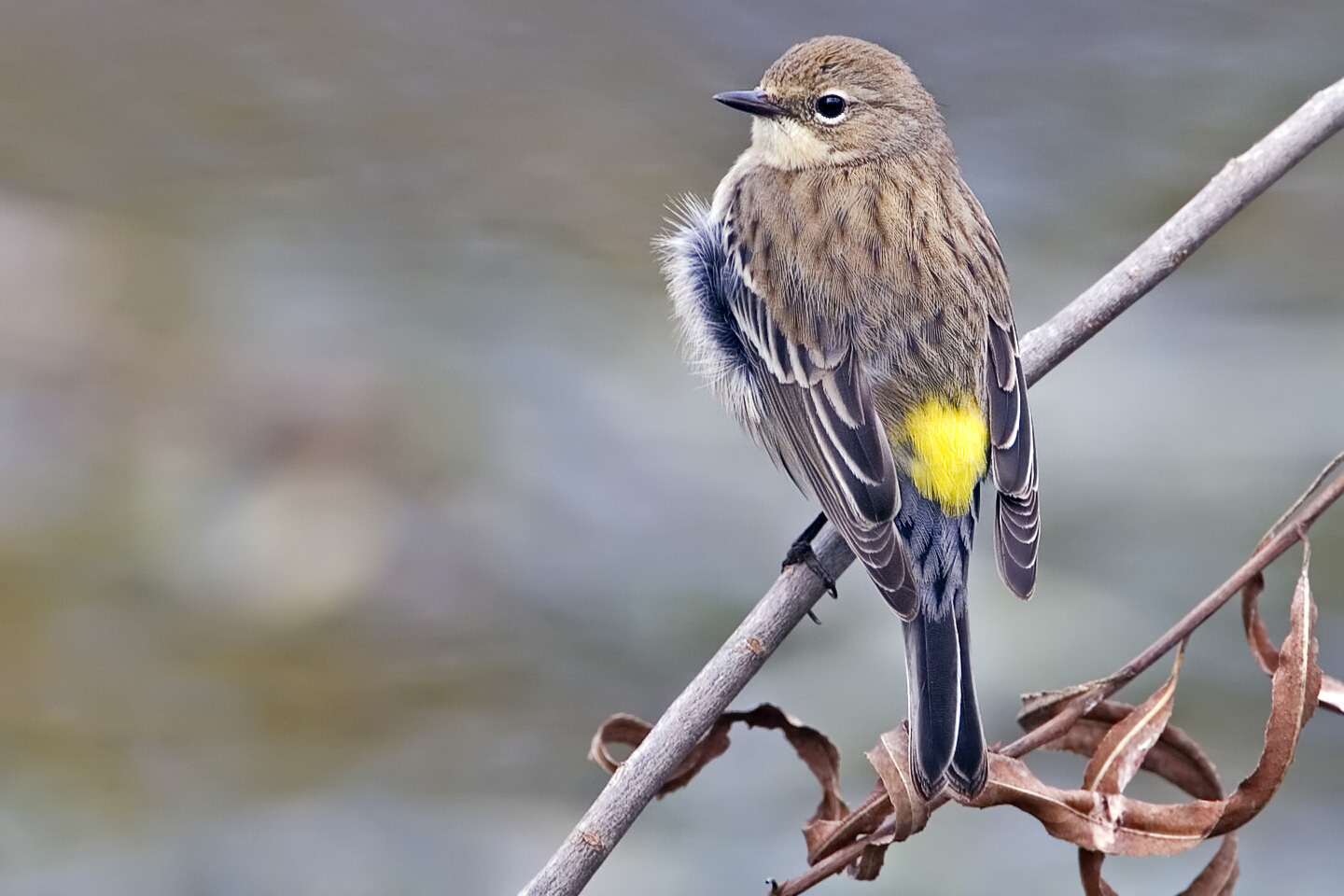
CAPE MAY WARBLER
Cape May Warblers are yellow below and striped with black.
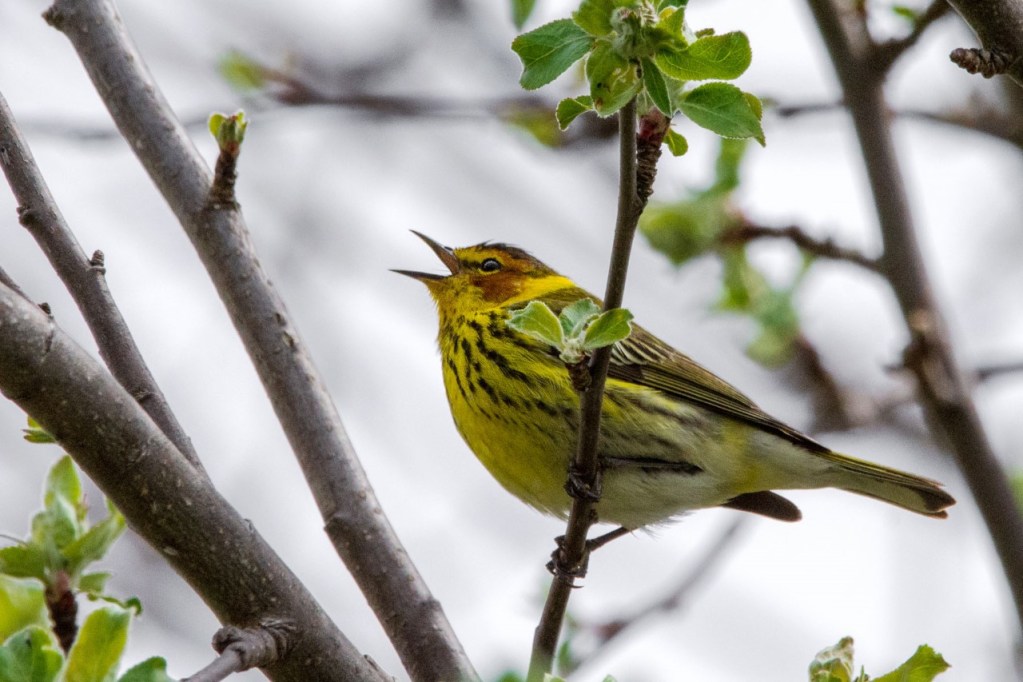
They have chestnut cheeks,

a yellow rump

and a black crown.

CHESTNUT-SIDED WABLER
The Chestnut-sided warbler has chestnut sides


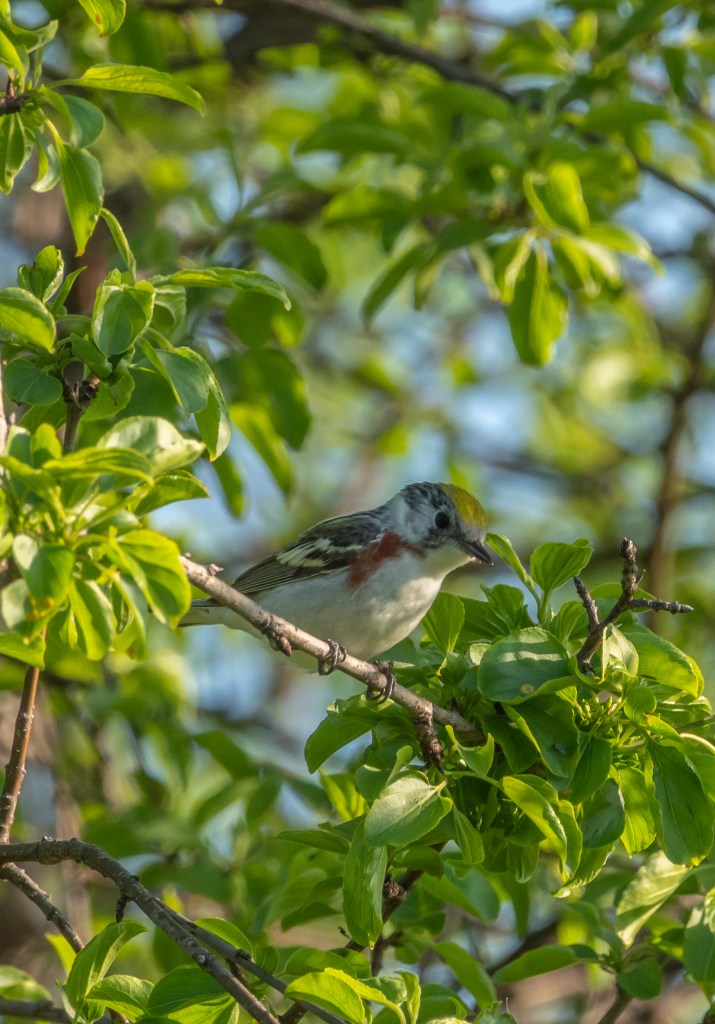
and a yellow cap.

BAY-BREASTED WARBLER
The male is dark-looking with a chestnut throat,
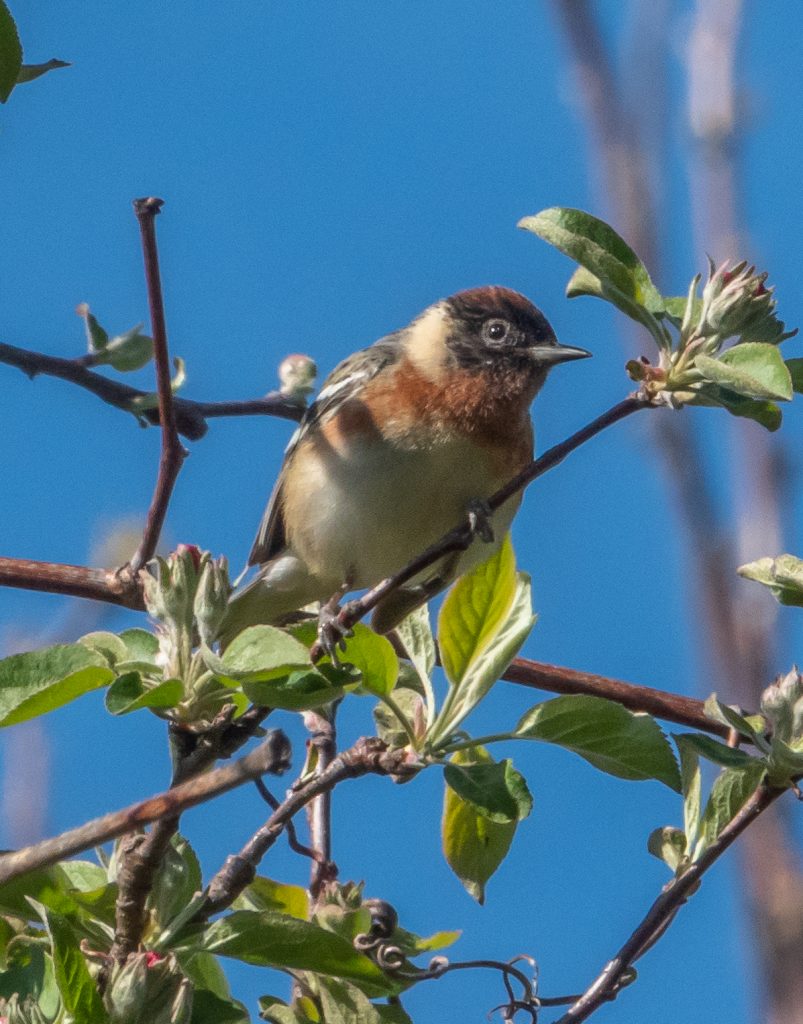
and chestnut upper breast and sides.

There is a large spot of pale buff on the cheek.

The female is paler, more washed-out.
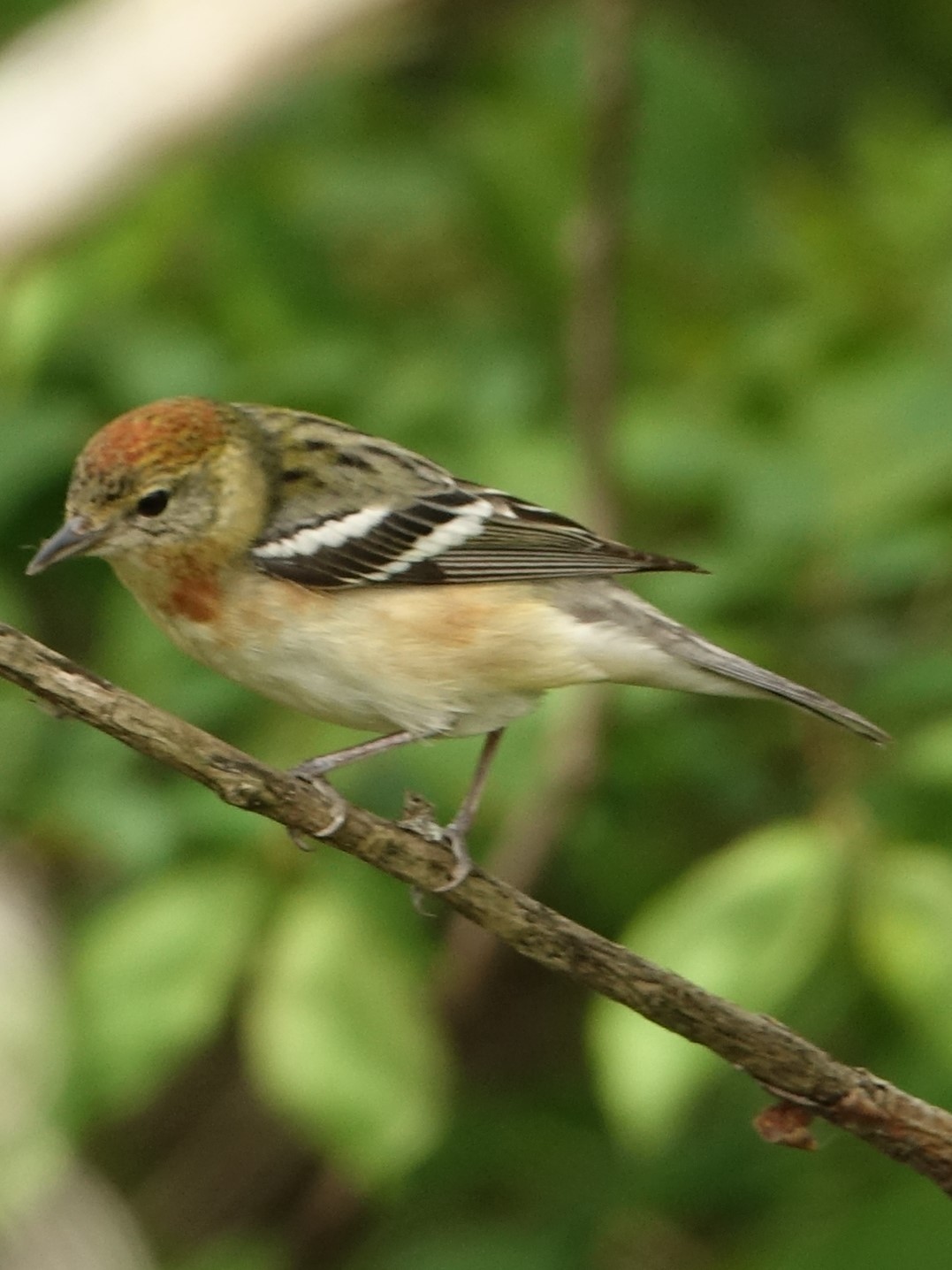

BLACKBURNIAN WARLER
The Blackburnian Warbler has a “fire throat.”

They are black and white

with flaming orange on the head and throat.


AMERICAN REDSTART
Males are black

with bright orange patches on the head and throat.
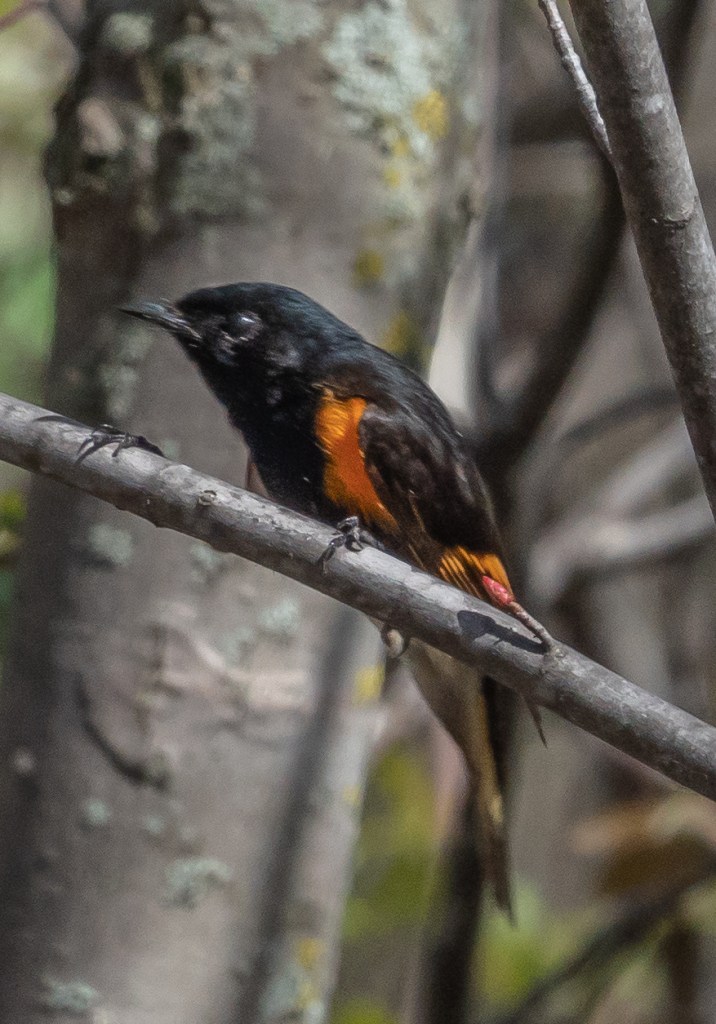
Females are olive-brown
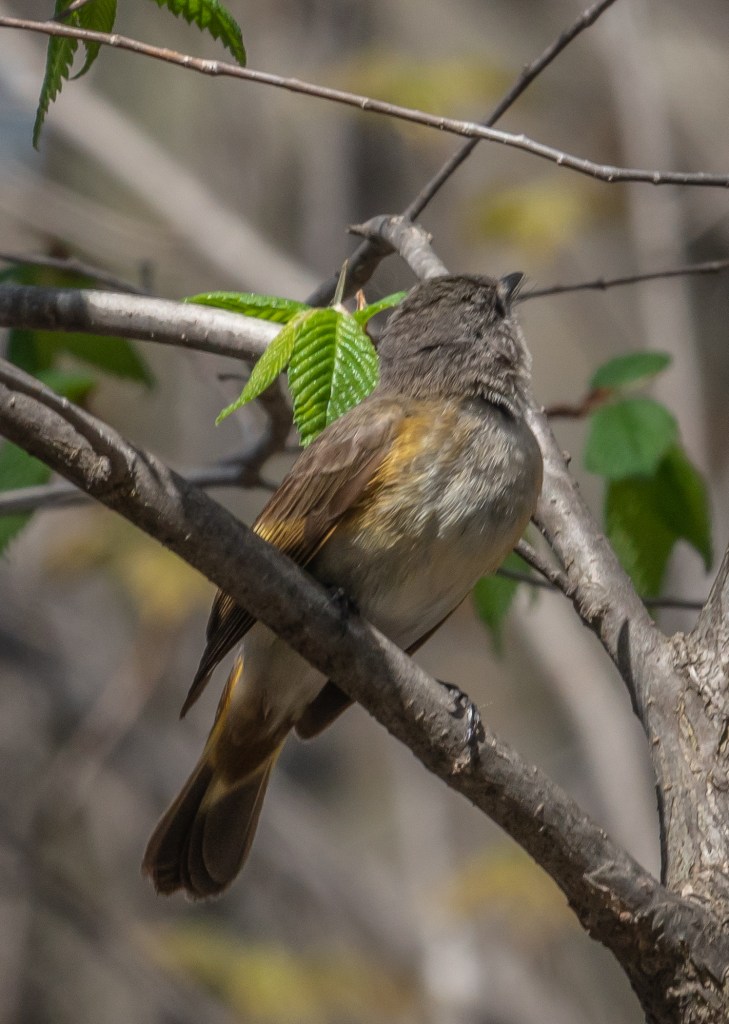
with yellow patches on the wings and tail.
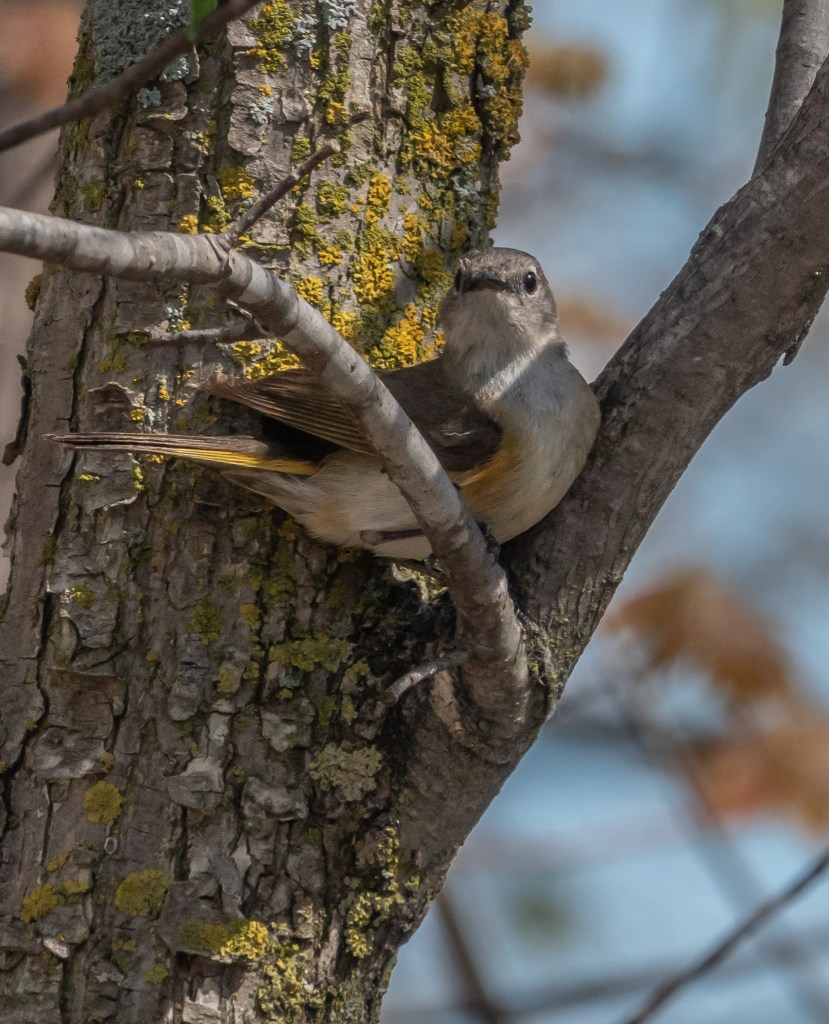
PINE WARBLER
Bright yellow breasted warbler lacking other conspicuous field marks.


The breast is dimmly steaked.

There are white wing bars.





PALM WARBLER
The Palm Warbler is brown above,

yellowish or white below

and narrowly streaked.

The chestnut cap is seen in spring.

The Yellow Warbler is the yellowist of all warblers.

Even the tail is largely yellow.

Males have rusty breast streaks.

Females do not.
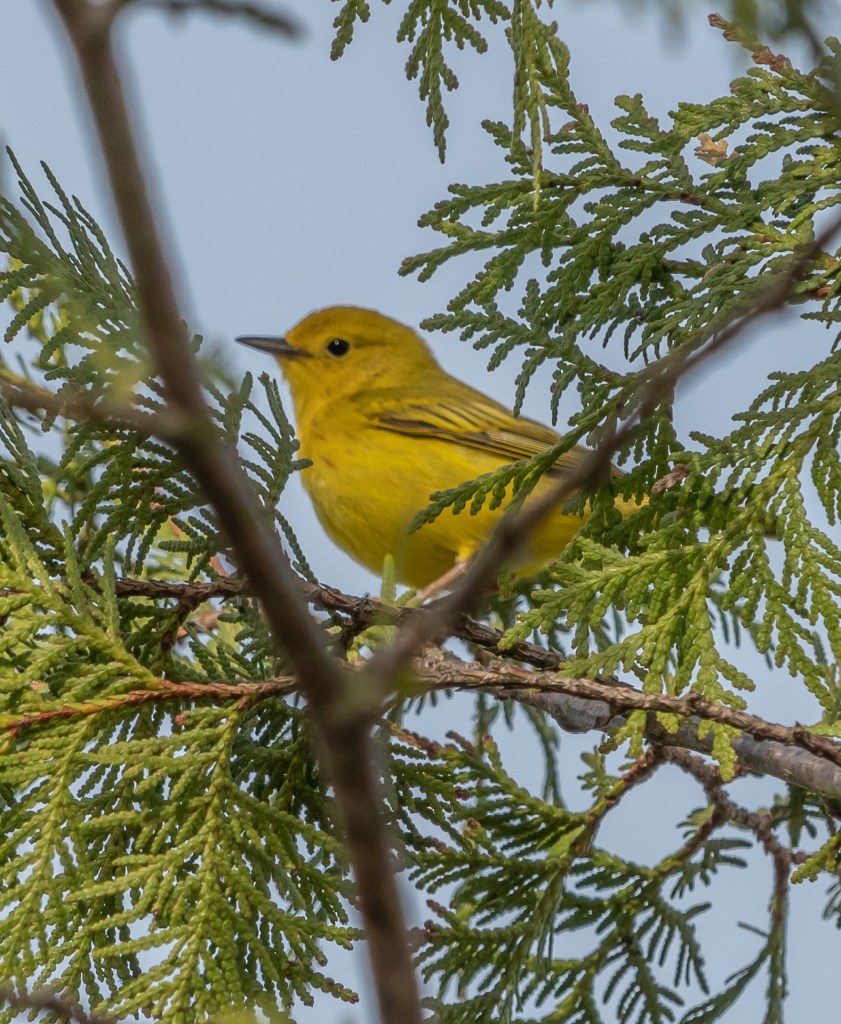
ORANGE-CROWNED WARBLER
The Orange-crowned Warbler is a dingy warbler without wing bars or other distinguishing field marks.

It is olive-green above

and greenish yellow below.

The breast is faintly streaked.

NASHVILLE WARBLER
The Nashville Warbler has a white eye-ring

and a yellow throat.

The head is gray

contrasting with an olive-green back.

COMMON YELLOWTHROAT
The male has a black mask

and a yellow throat.

Females do not have a black mask.


Miles Hearn

Such beautiful little birds. And so many varieties! I remember once, hiking right beside the Don River, when I was able to see a great many Yellow Warblers. That they were indeed Yellow Warblers was confirmed by a bird watcher who came along. Thanks, Miles!
Thanks Miles for making the id of the Warblers a little easier and much clearer to id in their different poses than from a single bird book illustration. I recognize some of these birds from the bird cards that came in boxes of tea many decades ago that my sister and I would fight over to complete our collections. Those little cards awakened a sense of beauty and wonder in me at the variety of birds one could possibly see if one went looking in the right places.
Wow, fabulous guide!!
This is very helpful, Miles. Thank you so much!
I will look at the often…
Is there a rationale for the order in which you present them?
Are these the ones we are most likely to see in the coming weeks?
Will miss walking with you!
Thank you for this refresher course! Especially useful for field identification are the poses from different angles. Thank you for the help but it will not substitute for your walks this spring. I will truly miss you.
Thanks, I would love to see some of these warblers.
Wonderful blog to keep for future ID.
Thanks, Miles.
Diana
Thank you Miles. What beautiful pictures. Makes it so much easier to identify! I have been encouraging our “Primary” grade children (ages 5-10) in our Sabbath School class to put small puzzles together of the birds. I love to give them a little bit of information and their identifiers.